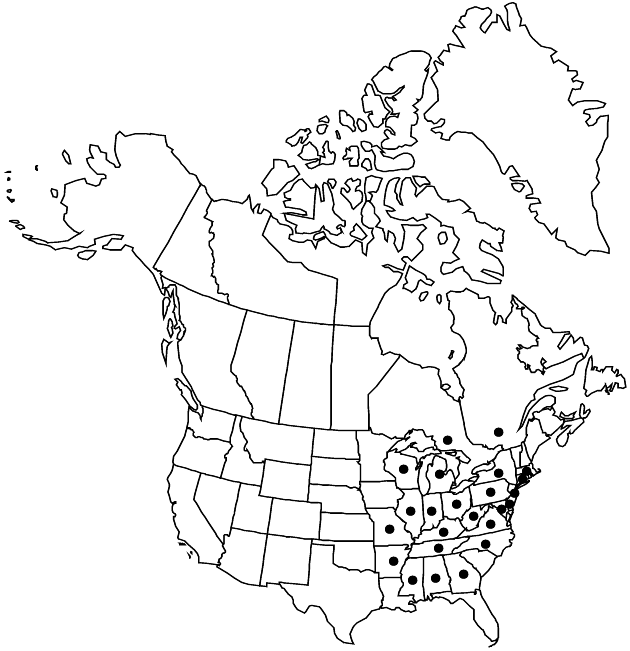Liatris spicata var. spicata
Endemic
Leaves: basal and proximal cauline 4–10 (–20) mm wide (cauline usually gradually reduced in size distally). Heads in dense to loose, spiciform arrays. Involucres (7–) 8–11 mm. Phyllaries usually greenish. Florets (4–) 6–8 (–12). 2n = 20.
Phenology: Flowering Jul–Sep.
Habitat: Fields, road banks, fencerows, lake sides, wet to moist prairies and meadows, bogs, seepages, dunes, limestone and granite outcrops, sandy clays, sandy loams, moist woods, oak, oak-pine, and sweetgum flats, tamarack swamps
Elevation: 50–1700 m
Distribution
Loading map...

Ont., Que., Ala., Ark., Conn., Del., Ga., Ill., Ind., Ky., Md., Mass., Mich., Miss., Mo., N.J., N.Y., N.C., Ohio, Pa., Tenn., Va., W.Va., Wis.
Discussion
Selected References
None.
Lower Taxa
None.
"barbellate" is not a number."fine" is not a number.
... more about "Liatris spicata var. spicata"
introrse +
connate +
rounded;obtuse +
scarious +
absent +
hirsute +
papillate +
continuous +
glabrous +
decurrent +
mostly linear;ovatelanceolate +
- 4-5-angled;10-ribbed +
hyaline +
linear-clavate +
stigmatic +
barbellate +
12;40 +
coarse +
absent +
glabrous +
not 2-lipped +
equaling +
monomorphic +
8-11-ribbed +
prismatic +
4.5mm;6mm +
straight +
distinct +
proximal +
6;8 +
bisexual +
dispersed +
singly +
Fields, road banks, fencerows, lake sides, wet to moist prairies and meadows, bogs, seepages, dunes, limestone and granite outcrops, sandy clays, sandy loams, moist woods, oak, oak-pine, and sweetgum flats, tamarack swamps +
discoid +
indeterminate +
homogamous +
surrounding +
turbinate-cylindric;turbinate-campanulate +
3-5-nerved +
alternate +
narrowly oblong-lanceolate;narrowly spatulate-oblanceolate +
ciliolate +
2-carpellate +
inferior +
attached +
anatropous +
persistent +
absent +
tough +
thick +
connate +
nerved +
persistent +
distinct +
falling +
glabrous +
unequal +
equal +
Sp. Pl. +
1803 +
absent +
epaleate +
conic;spheric;usually flat;convex +
fibrous +
exalbuminous +
modifed +
4;5 +
Endemic +
alternate +
erect +
glabrous +
2-branched +
hirsutulous +
papillate +
Liatris spicata var. spicata +
Liatris spicata +
variety +
perennial +